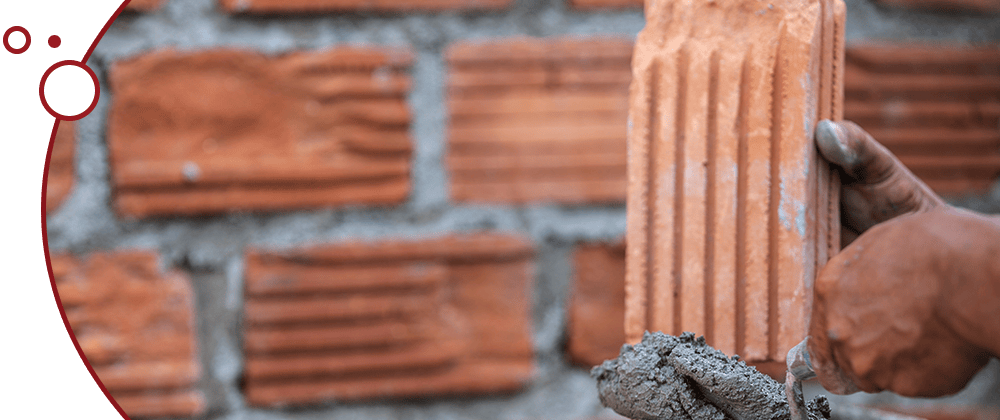
Brick veneer repair is a critical aspect of maintaining the structural integrity and aesthetic value of buildings and homes. This guide delves into the intricacies of repairing brick veneer, a popular architectural feature for its durability and visual appeal.
Understanding the signs of damage, the causes, and the repair process is essential for homeowners and professionals alike. Whether you’re dealing with minor cracks or extensive damage, this article will equip you with the knowledge and skills needed to tackle brick veneer repair effectively.
Table of Contents
What is Brick Veneer?
Brick veneer, often mistaken for solid brick, is actually a single layer of bricks attached to the exterior of a house or building. This technique provides the aesthetic appeal of brick, but with different structural characteristics. Unlike solid brick walls, brick veneer acts as a decorative front, installed over another type of structure—usually wood framing or concrete. It’s important to understand this distinction because it affects the way repairs are handled. Brick veneer is typically attached to the structural part of the building with metal ties, and there’s usually an air space between the veneer and the underlying structure to allow for drainage and ventilation.
Signs of Damage in Brick Veneer
Identifying issues early in brick veneer can prevent extensive damage. The most common signs of damage include:
- Cracks: Small or large cracks in the bricks or mortar joints can indicate movement or stress.
- Loose Bricks: This can be a sign of a failure in the ties connecting the veneer to the structure.
- Water Damage: Signs include dampness on the interior walls, peeling paint, or mold growth.
- Efflorescence: White, powdery residue on the brick surface is a sign of water evaporation from the bricks.
Common Causes of Brick Veneer Damage
Brick veneer damage can occur due to various reasons:
- Water Infiltration: The most common cause, leading to a range of issues from efflorescence to structural damage.
- Foundation Issues: Movement in the building’s foundation can cause cracks and shifting in the brick veneer.
- Environmental Factors: Severe weather conditions, including freeze-thaw cycles, can lead to deterioration.
- Improper Installation: If the brick veneer was not installed correctly, it could lead to various problems, including loose bricks.
Step-by-Step Guide to Brick Veneer Repair
Assessing the Damage
Assessment involves a thorough examination of the brick veneer. Look for the signs of damage mentioned above and try to determine the extent and cause. This will help in deciding whether a DIY approach is feasible or if professional help is needed.
Gathering Tools and Materials
For most repairs, you will need:
- Chisel and hammer
- Mortar mix
- Trowel
- Replacement bricks (if necessary)
- Safety glasses and gloves
- Caulk and caulking gun (for sealing purposes)
The Repair Process
- Removing Damaged Bricks: Carefully chisel out the mortar around the damaged bricks and remove them. Be careful not to damage adjacent bricks.
- Preparing the Area: Clean out old mortar from the cavity and dampen it slightly before proceeding.
- Mixing Mortar: Prepare the mortar mix according to the manufacturer’s instructions.
- Installing New Bricks: Apply mortar to the cavity and to the replacement brick. Place the brick in the cavity and tap it into position.
- Finishing: Once the mortar starts to set, tool it to match the existing joints. Remove any excess mortar and clean the area.
Preventive Measures and Maintenance Tips
- Regularly inspect your brick veneer for signs of damage.
- Ensure proper drainage around your property to avoid water-related issues.
- Seal any cracks or gaps in the mortar to prevent water infiltration.
- Consider applying a breathable, water-repellent coating to protect against moisture.
Professional vs. DIY Brick Veneer Repair
Deciding between a DIY repair and hiring a professional depends on the extent of the damage and your skill level. For minor cracks or a few loose bricks, a DIY approach can be sufficient. However, for extensive damage, structural issues, or if you’re unsure about the repair process, it’s best to consult a professional. They can provide a more comprehensive assessment and ensure that repairs are done safely and effectively.
This guide provides a foundational understanding of brick veneer, how to identify and address damage, and when to seek professional help. Regular maintenance and timely repairs are crucial in preserving the integrity and appearance of your brick veneer.
Conclusion
In conclusion, understanding and addressing the needs of brick veneer repair is crucial for maintaining the longevity and appearance of your property. Regular inspections, proper maintenance, and timely repairs can prevent small issues from becoming major problems. Whether you choose to handle repairs yourself or seek professional assistance, this guide provides a comprehensive foundation for managing brick veneer repair with confidence and expertise.
FAQs
Q: How can I tell if my brick veneer needs repair?
A: Look for signs like cracks, loose bricks, water damage, or white powdery residue on the brick surface.
Q: Is repairing brick veneer a DIY project or should I hire a professional?
A: It depends on the extent of the damage. Minor repairs can be DIY, but extensive or structural damage requires a professional.
Q: What causes damage to brick veneer?
A: Common causes include water infiltration, environmental factors, foundation issues, and improper installation.
Q: How often should I inspect my brick veneer for damage?
A: It’s recommended to inspect your brick veneer annually, or more frequently in severe weather areas.
Q: Can cracked brick veneer lead to structural issues?
A: Yes, if left unaddressed, cracks in brick veneer can lead to water infiltration and potential structural damage.


